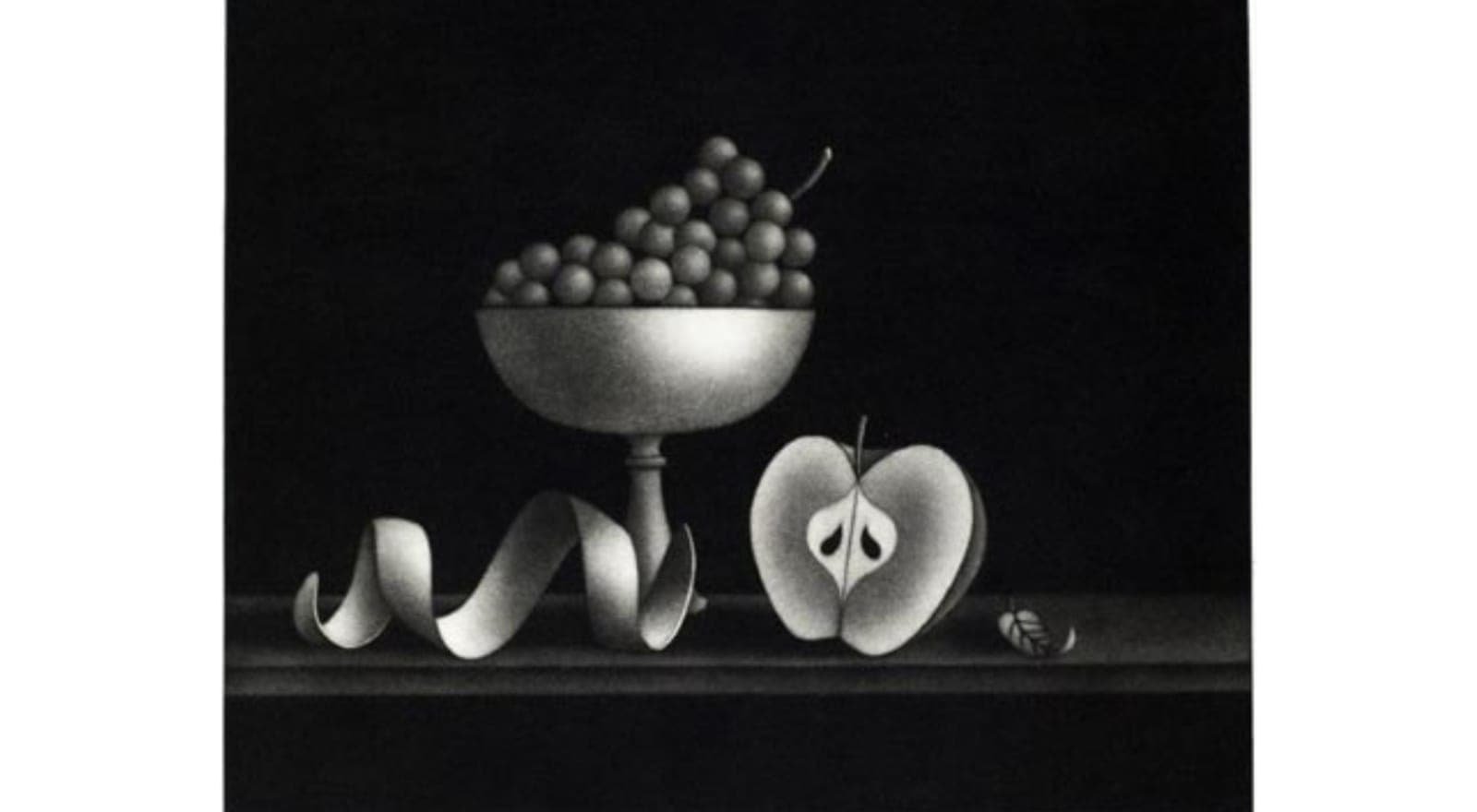Mezzotint is among the most physically demanding printmaking mediums, one tried and quickly abandoned as "too difficult", for example, by M.C. Escher. A copper plate is "rocked" with a curved, notched blade until the surface is entirely pitted. At this stage, an inked plate would print a rich, uniform black. The artist then uses a scraper or burnisher to flatten the raised parts, a little for dark grays, a lot for light grays, completely for white (after inking and wiping, the plate holds no ink where it is smooth). Colors are achieved by similarly working one or more supplementary plates. The result of this process is an image emerging from pitch black "nothingness" - a true analogue to Creation (see the work of 19th-century artist John Martin, whose mezzotint illustrations for Paradise Lost and The Bible exemplify the extraordinary effects of scale and dramatic light possible with this medium). Outlines are simplified by absence of line, while substance is rendered with a virtually infinite range of tonal subtlety. While John Martin's virtuosity has never been surpassed in this medium, among modern practitioners Mario Avati achieved renown for his still lifes, which convey both the volume and dimension of his subjects, combined with a sense of timelessness.
Mezzotint
